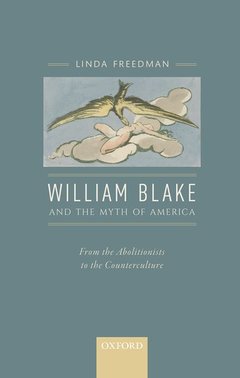Description
William Blake and the Myth of America
From the Abolitionists to the Counterculture
Author: Freedman Linda
Language: English
Approximative price 101.56 €
In Print (Delivery period: 21 days).
Add to cart
Publication date: 08-2018
288 p. · 14.7x22.4 cm · Hardback
288 p. · 14.7x22.4 cm · Hardback
Description
/li>Biography
/li>
This volume tells the story of William Blake's literary reception in America and suggests that ideas about Blake's poetry and personality helped shape mythopoeic visions of America from the Abolitionists to the counterculture. It links high and low culture and covers poetry, music, theology, and the novel. American writers have turned to Blake to rediscover the symbolic meaning of their country in times of cataclysmic change, terror, and hope. Blake entered American society when slavery was rife and civil war threatened the fragile experiment of democracy. He found his moment in the mid twentieth-century counterculture as left-wing Americans took refuge in the arts at a time of increasingly reactionary conservatism, vicious racism, pervasive sexism, dangerous nuclear competition, and an increasingly unpopular war in Vietnam, the fires of Orc raging against the systems of Urizen. Blake's America, as a symbol of cyclical hope and despair, influenced many Americans who saw themselves as continuing the task of prophecy and vision. Blakean forms of bardic song, aphorism, prophecy, and lament became particularly relevant to a literary tradition which centralised the relationship between aspiration and experience. His interrogations of power and privilege, freedom and form resonated with Americans who repeatedly wrestled with the deep ironies of new world symbolism and sought to renew a Whitmanesque ideal of democracy through affection and openness towards alterity.
Linda Freedman is a Lecturer in English and American literature at University College London. She is the author of Emily Dickinson and the Religious Imagination (Cambridge University Press, 2011) and has published widely on nineteenth and twentieth century literature. Her work explores the relationship between literature, theology, and the visual arts; transatlantic connections; and the afterlife of Romanticism.
© 2024 LAVOISIER S.A.S.
These books may interest you

Beastly Blake 94.94 €



